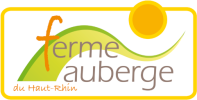Tradition on the move
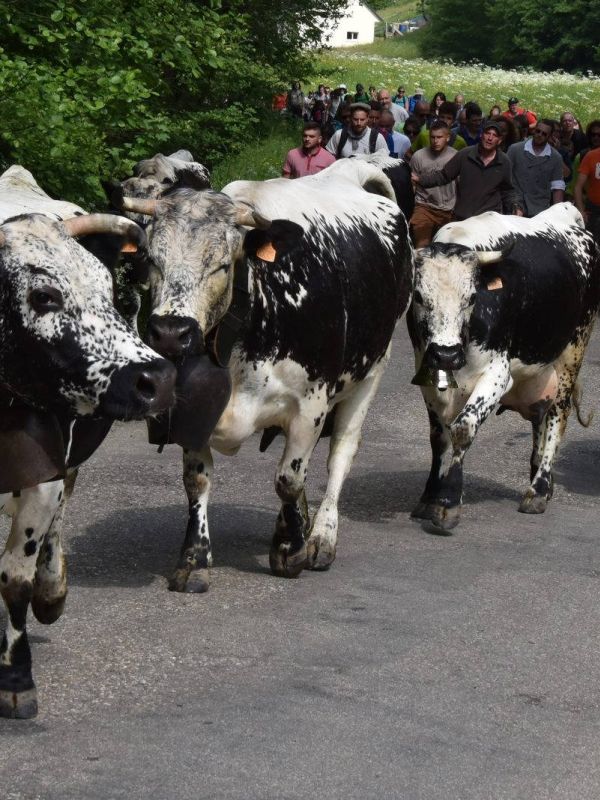
in addition to their culinary specialities, when we talk about the farm inns, we can’t help but talk about traditions: the vosges breed, the transhumance, the marcaire…
The Vosges cattle breed
To think that it almost disappeared in favor of more productive breeds, our agile, proud, beautiful Vosgienne.
Imagine for a moment our stubble fields without her, without those black spots speckled with white, a wide white stripe along the spine that can be seen in the landscape…
This hardy, robust, medium-sized cattle breed is a dairy to mixed breed. It is an excellent walker, lively but placid, occasionally belligerent, agile, which is particularly adapted to difficult natural environments. Its origins date back to the 17th century. It was “imported” by the Swedes during the Thirty Years’ War.
Thus, this hardy breed has been present in the Vosges Massif for a long time, which has enabled it to adapt perfectly to the climatic and soil conditions of the region. It was at the dawn of the 20th century that the Vosges reached its peak with 125,000 head in north-eastern France. But the two world wars, disease and the decline in agriculture brought this figure down to 3,000 head in 1977.
In the meantime, it had already lost all official recognition by the administration since 1947.
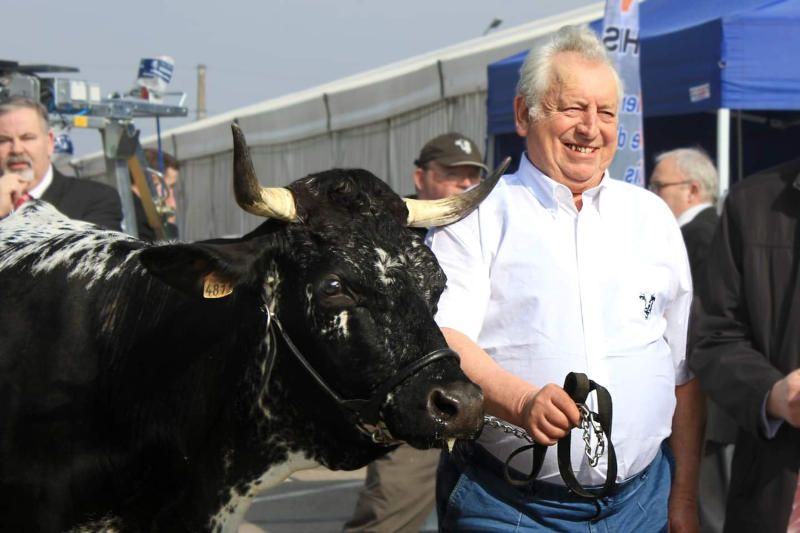
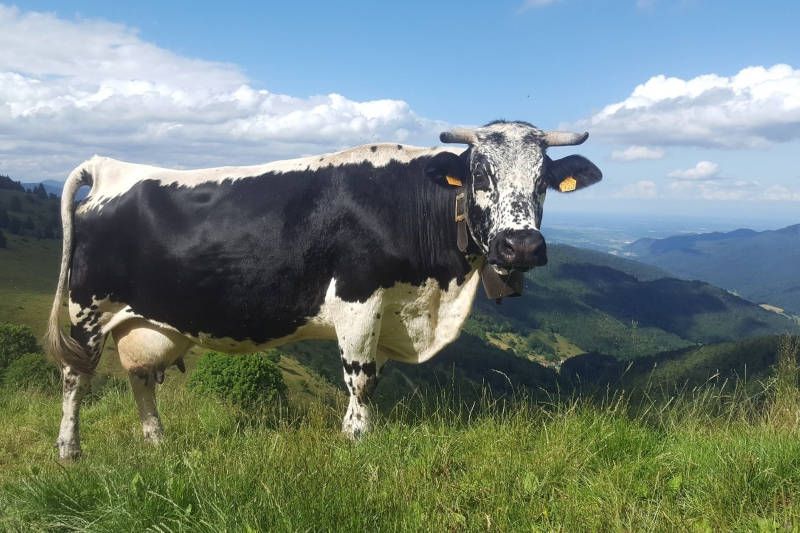
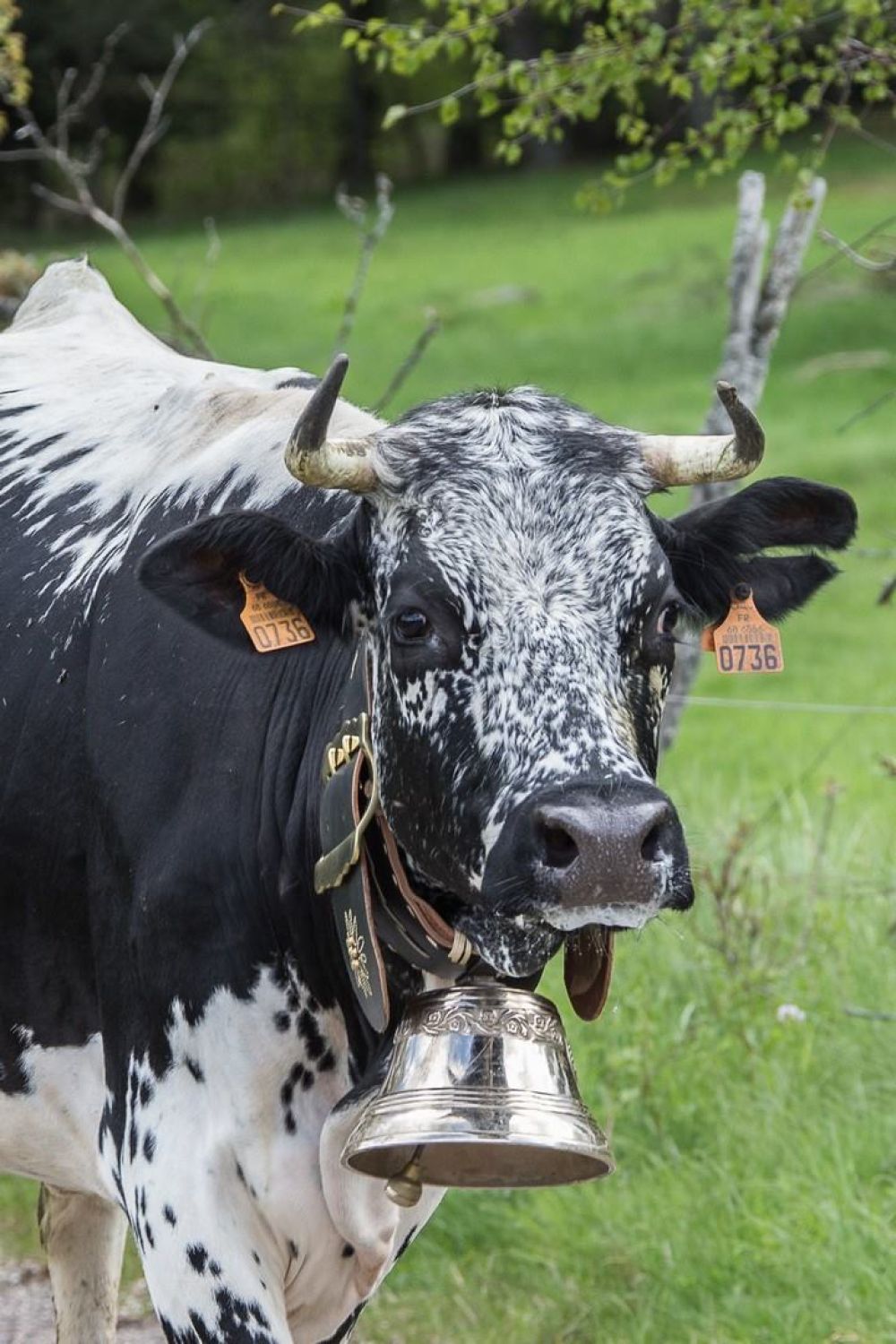
Thanks to Jean Wehrey (honorary president of the farmhouse inns association – deceased in 2021) and a few other “Vosgiennes enthusiasts”, a safeguarding plan was set up in 1977: the Vosgienne was saved and once again earned its letters of nobility.
It plays an active role in the maintenance of open spaces in the mountains by enhancing the value of the land and combating overgrowth. Finally, it is an essential element in identifying a dairy product with its terroir.
An excellent dairy cow (4,000 litres of milk per year), its balanced milk, rich in fat, is perfectly suited to the production of Munster cheese. Its tightly grained meat is appreciated by connoisseurs. You will surely taste it in our farm inns where it is more than ever the guarantor of the wild beauty of our mountains in the respect of the marcaire traditions.
Transhumance
The Vosges Mountains are a mountain where livestock farming is considered a specific activity. With the clearing of the uplands in the Middle Ages, livestock farming became an important activity. The practice of summering is specific to certain valleys, notably that of Munster.
The year of a marcaire is divided into two distinct parts. The first part traditionally runs from 29 September (St-Michel) to 25 May (St-Urbain). The activity takes place at the winter farm in the valley village. The other runs from 25 May to 29 September and takes place in the mountains, on the summer farm.
In the Hautes-Vosges, for more than 1000 years, farmers have lived to the rhythm of the transhumance. And the tradition has been perpetuated from generation to generation through the centuries until today.
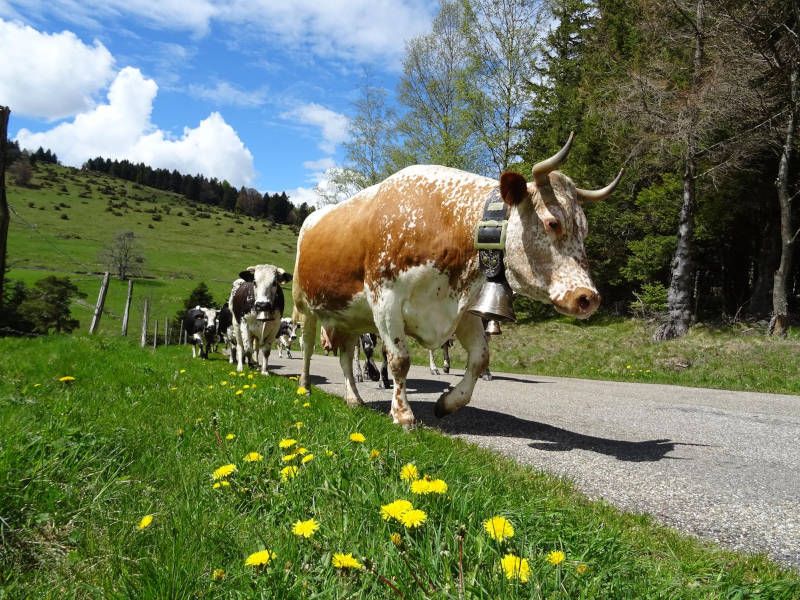
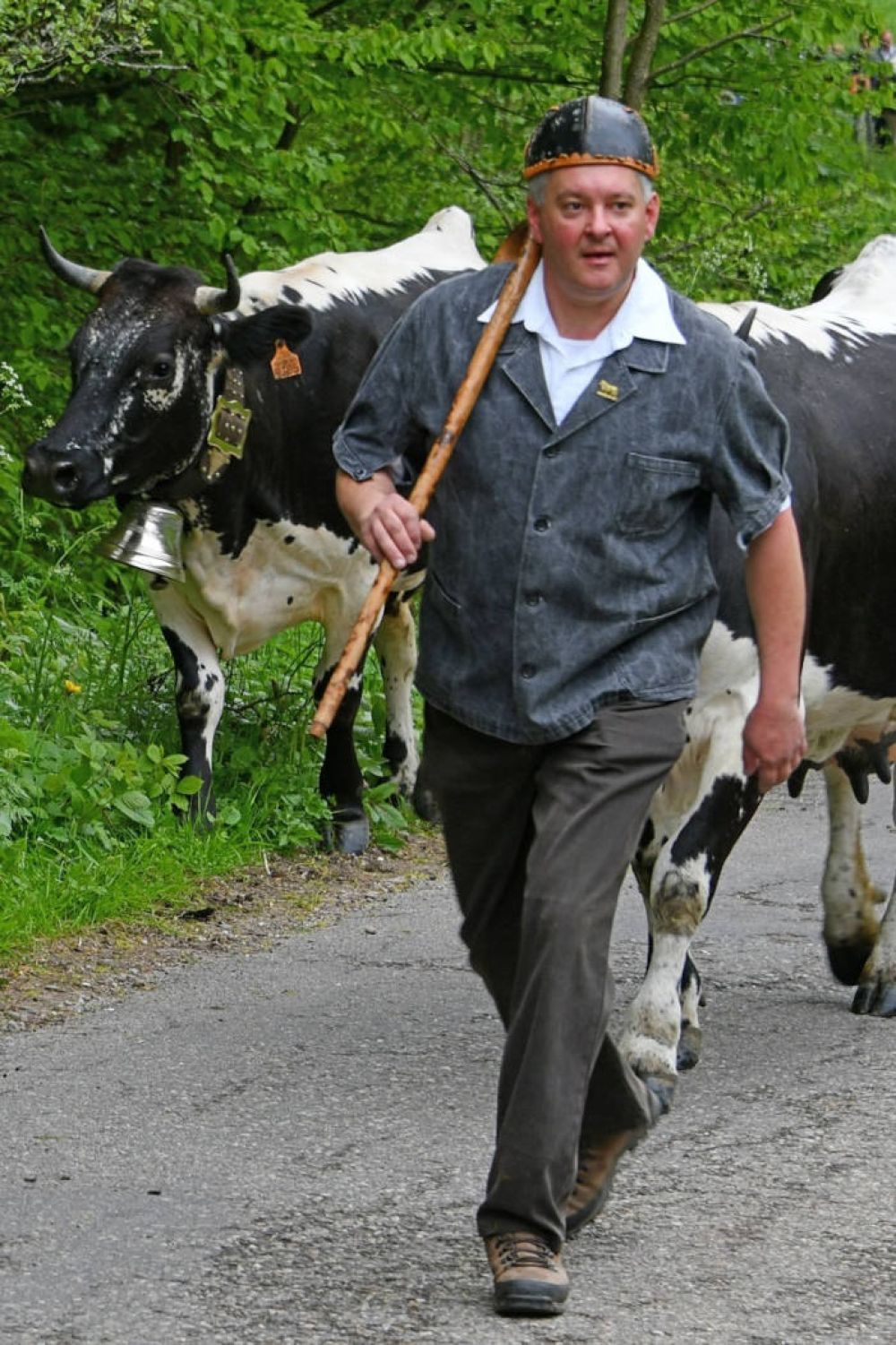
The transhumance (‘s Wandla) is a very important moment in the year of the marcaire. The date is chosen according to tradition (never on Friday, for example, as it is the day of Christ’s death) and according to the climate. For this great day, the cows are cleaned, brushed and trimmed, as well as the bells and clarines. The herd follows the marcaire and the master cow or “Meisterküeh” who carries the biggest clarine to the summer farm or marcairie. Some cows can be decorated with branches.
They will stay there until autumn, when the grass has dried up, there is no more fodder, the temperature has dropped and the first snow has fallen.
The marcaire
Since the 9th century, the marcaire (from the Alsatian word “malker” which means milker) has exploited and maintained the high stubble fields of the Vosges Massif after clearing them. It was the Alsatian marcaires who first conquered the Hautes-Vosges, bringing with them their language, tradition and customs.
The marcaire is therefore a mountain farmer who practices transhumance and exploits a herd of dairy cows for the production of cheeses, notably the famous Munster. Every year, from the beginning of June to the end of October (depending on the weather), the herds leave the farms at the bottom of the valley to take up their summer quarters on the high stubble fields, in the marcairie (“d’Malkerei”).
Today, these marcaires, most of whom have become farmer-aubergists, are the guarantors of ancestral traditions.
The marcaires are hospitable people who have always been able to welcome the visitors of the past in a simple and friendly manner. They have passed on their know-how to the farmer and innkeepers who today have succeeded in perpetuating this generous mountain welcome.
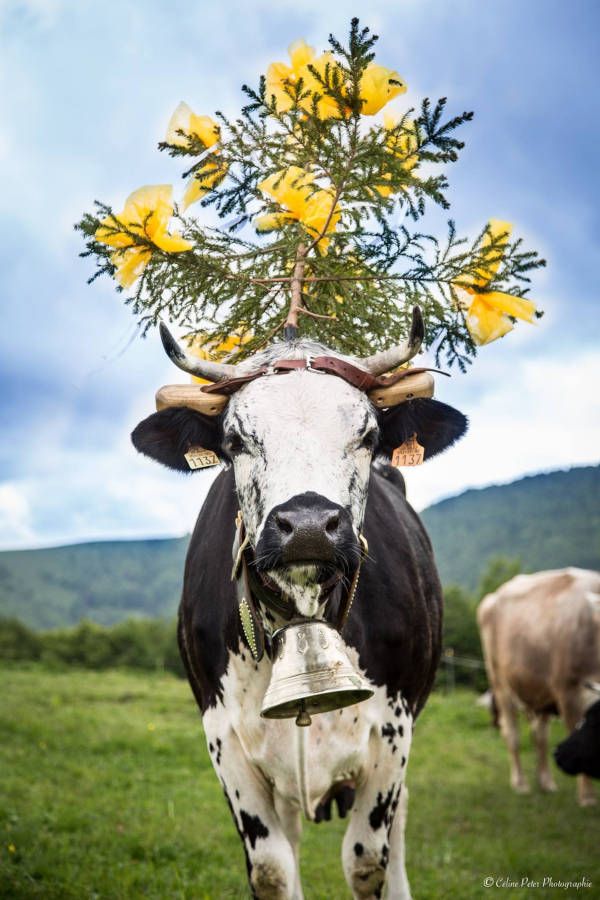
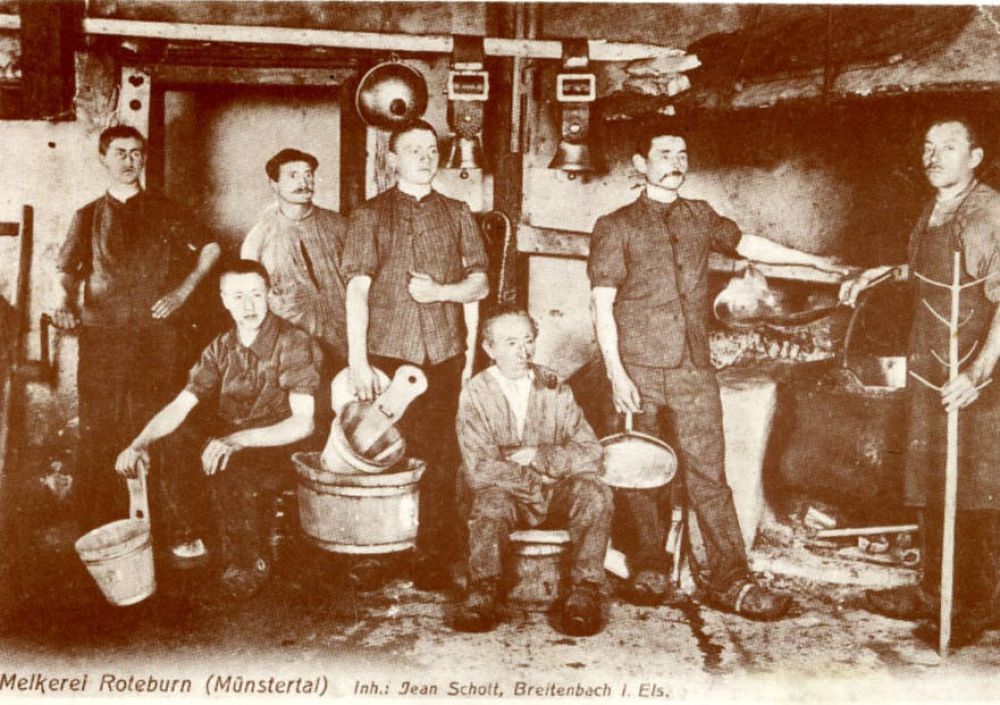
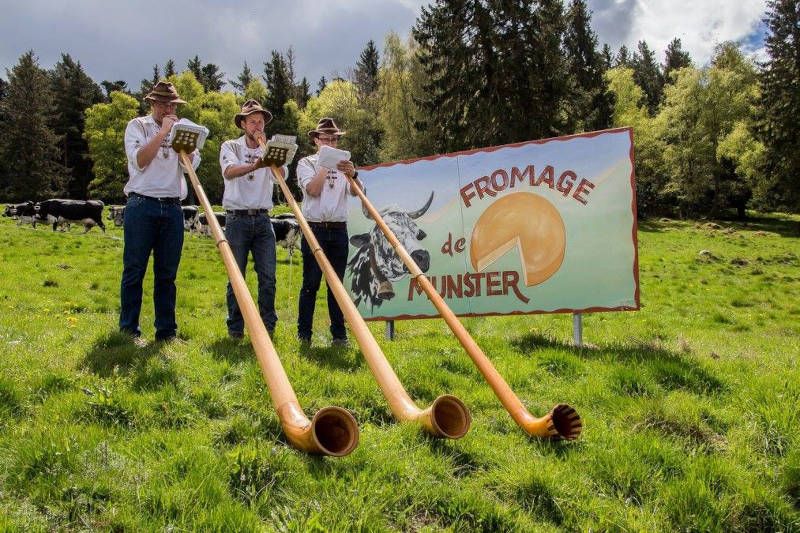
The marcaires are part of the local identity and continue to be honoured through the many songs and stories. The marcaires also have their patron saint, Saint-Laurent, who is celebrated on 10 August and who marks the mid-summer season.
Even today, when talking about the marcaire, one cannot help but think of the alphorn, the mountain festivals organised on the terraces of the marcairies (“Barikelb”), the traditional costume (e.g. grey or blue short-sleeved jacket made of coutil with a light-coloured shirt, trousers made of dark and resistant velvet, clogs on the feet and a leather cap or “Malkerkappala” on the head for men), etc.

